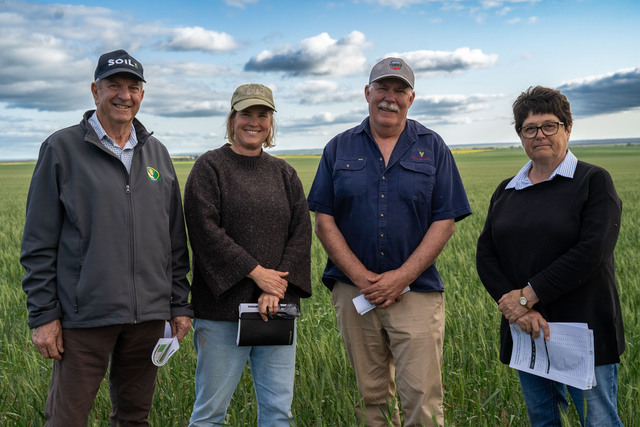
An Eyre Peninsula project is among those to share in $3.12 million in new research funding from the South Australian Grain Industry Trust (SAGIT) and its partners.
In its first year under a new funding model, SAGIT has funded 23 new grains research projects to a value of $2.36m.
Co-funding agreements have seen the total amount of project funding reach $3.12m.
A project from Ag Innovation & Research Eyre Peninsula (AIR EP) is among the 23 to receive funding.
AIR EP has received $100,000 for its ‘Eyre Peninsula internship in applied grains research 2026’ – co-funded with the South Australian Drought Resilience Adoption and Innovation Hub (SA Drought Hub).
Executive officer Naomi Scholz said the news of the funding was “brilliant” and that the program had been extremely valuable for the region.
“It gives graduates a chance to come back to Eyre Peninsula and work on all sorts of grains research so they can have a feel for what they want to focus on,” she said.
“We have had a 100 per cent success rate with interns. All have gone on to find employment with organisations on Eyre Peninsula or are working on projects with an Eyre Peninsula focus.
“The project allows us to attract people to EP to show the work environment and opportunities, and the lifestyle.”
Ms Scholz said the organisation would start hunting for a new intern soon, to get started in the role in February 2026.
Despite crop production in the 2024-25 season being the lowest since 2008-09, a change to the levy collection method in 2024 from the previous rate of 30 cents per tonne to 0.12 per cent of farm gate value has enabled SAGIT to maintain a consistent level of funding.
SAGIT chairperson Dr Andrew Barr said with funding from the Grains Research and Development Corporation, SA Drought Hub and the South Australian Research and Development Institute, as well as funding sought from the SA Sheep Industry Fund, SAGIT could extend its reach.
“The co-investment approach allows SAGIT to expand its research scope and deliver more valuable insights directly to South Australian growers,” he said.
“SAGIT has worked with each of these co-funders to ensure that where priorities overlap, we can quickly and efficiently reach a decision, allow the funds to flow and not burden researchers with extra reporting requirements. Collaboration between research organisations is essential to maximise funding opportunities and support a broader range of projects than we could manage independently.
“SAGIT is extremely grateful to all these partners. We are grateful to the ongoing support of South Australian grain growers who continue to see the value in funding a unique research organisation such as SAGIT.”
Dr Barr said it was also pleasing to see the strong engagement from the research community, with a total of 54 project applications submitted for this year’s funding allocation.
“We outlined some key focus areas for funding this year and the applications addressed these, particularly in the areas of carbon, phosphorus fertilisers, sustainability, and weed management,” he said.
A wide range of projects have been funded across many areas including crop protection and disease management, weed management and herbicide use, soil health, climate resilience and risk management, market development and capacity building.

